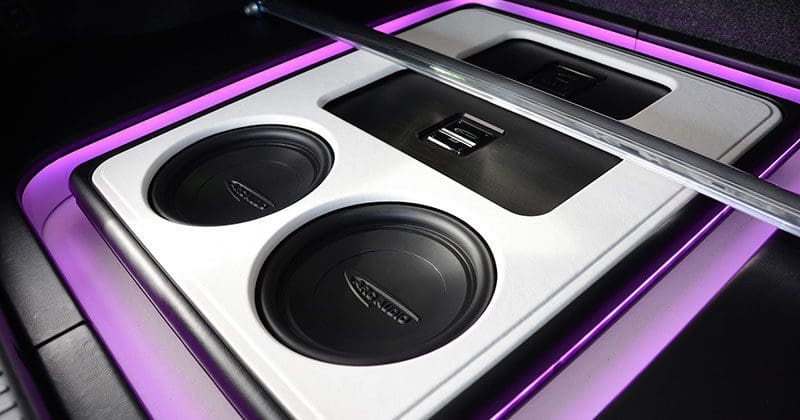Adding a subwoofer to your car audio system is a great way to improve the quality and accuracy of the music you hear. As we’ve explained many times, sending bass information to a dedicated amplifier and a larger speaker alleviates the need for the small speakers in your vehicle to work hard trying to reproduce low-frequency information. The result is that the smaller ones sound better and can play louder, and the dedicated subwoofer will play those low notes with authority. Thousands of options are available for adding a subwoofer system to your vehicle. Let’s take a look at a few criteria you should consider before visiting your local specialty mobile enhancement retailer.
How Much Bass Is Enough?
The most difficult part of choosing a subwoofer system for your car or truck is deciding how much bass you need. Will an 8-inch driver in a small enclosure behind the seat of a pickup truck satisfy your needs, or do you need a custom system build with a pair of 12-inch subwoofers in a bass-reflex design? The best way to decide this is to listen to examples of each solution. If you have a friend with an upgraded stereo in a similar vehicle, decide whether their solution gets loud enough and plays low enough. If you can provide your product specialist with some feedback, they can help you narrow down your choices.
Depending on the shop you’re dealing with, they may have a demo vehicle or two that you can listen to. Auditioning a shop vehicle is a great opportunity to hear how a properly configured subwoofer should sound.
It’s crucial to be forthcoming about your expectations. The cost and complexity of a subwoofer that will “warm up your music” is very different than one that can shake the rear view mirror off your windshield. If you don’t ask for what you want, well, you won’t be happy with the results.
How Much Room Can You Spare?
All subwoofers require that you dedicate some amount of space to the amplifier and enclosure. If you have an SUV and need to haul supplies for work, or gear for a sports team, then a large custom cabinet might not be a wise choice. In terms of options, compact all-in-one powered subwoofer systems will fit under a seat. These solutions are a nice upgrade to a factory-installed audio system or one that is running from the power amp built into a radio.
The next step up in terms of performance are compact enclosures designed to fit behind the seat of a pickup truck or in the corner of an SUV. Several companies offer vehicle-specific enclosures that fit under the seat or against the back wall of a pickup truck, in a center console or in the corner of the cargo area in your vehicle. Finally, generic enclosures are available for the back of an SUV or the trunk of your car. Finally, the options for a custom upgrade are nearly limitless. You can have your local car audio upgrade specialist design and build a solution that’s subtle, or crazy if you want to show it off to friends.
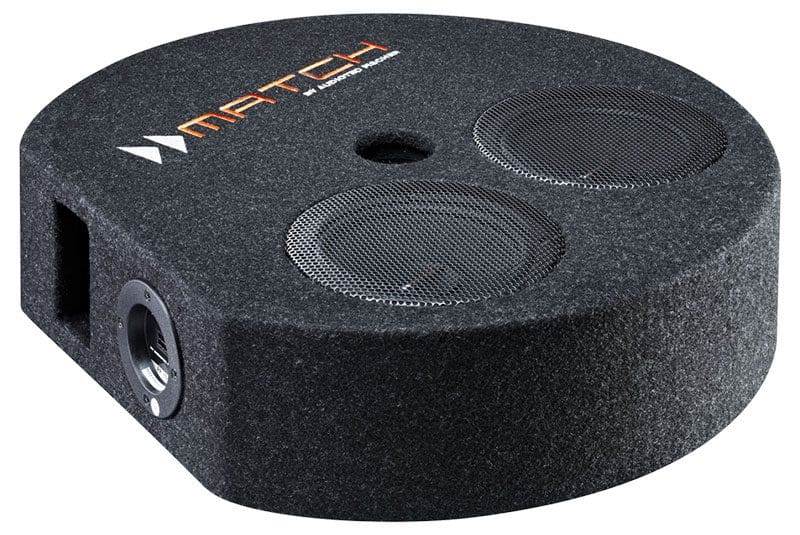
Powered Under-Seat Subwoofers
The least expensive subwoofer upgrade solution is to pick an all-in-one package that includes both an amplifier and the subwoofer, along with an appropriate enclosure. Most of these systems include some sort of remote level control that makes it easy for the driver to adjust the level of the sub relative to that of the other speakers in the vehicle. These enclosures will fit under the seat of many cars and most SUVs. While most are generic, companies like Alpine have developed surprisingly affordable vehicle-specific solutions.
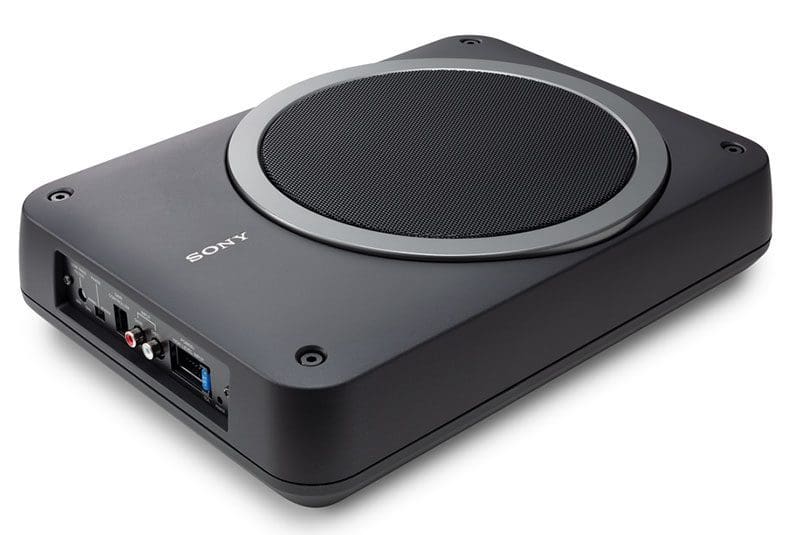
Compact Powered Enclosures
The limiting factor on the under-seat enclosures is their output capability and low-frequency extension. If you want bass that you can really feel, then you’ll likely want to choose something with a larger enclosure and driver, and a more powerful amplifier. Most of these solutions are designed by the manufacturers to use one of their a-la-carte subwoofers and are combined with a dedicated amplifier in the 250+ watt range.
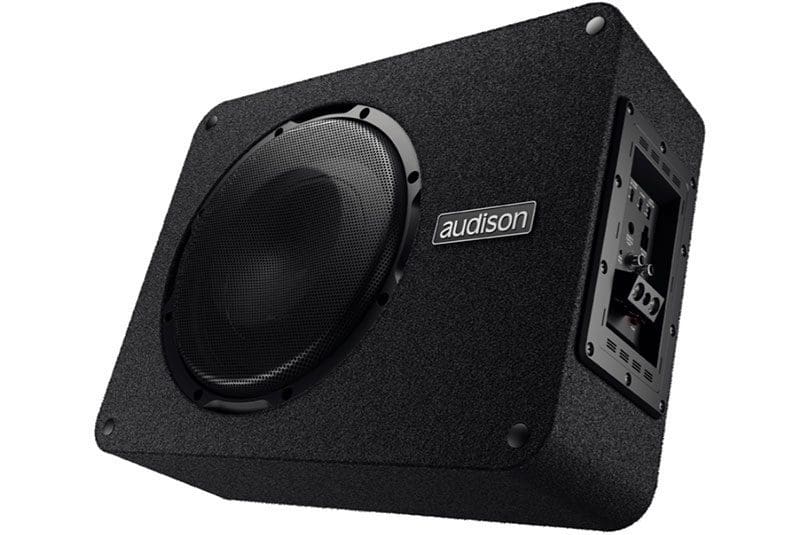
Vehicle-Specific Enclosures
Though they can cost a little more, choosing a vehicle-specific subwoofer system will typically increase the maximum output capability and low-frequency extension even further. Most of these enclosures use 8-, 10- or 12-inch drivers and are made from injection-molded plastic or fiberglass that’s contoured to fit the desired vehicle perfectly. Some of these systems include amplifiers, but most require an external amp. As important as choosing a good subwoofer is, the amplifier you choose should be equally impressive in terms of its efficiency, power production capabilities and sound quality.
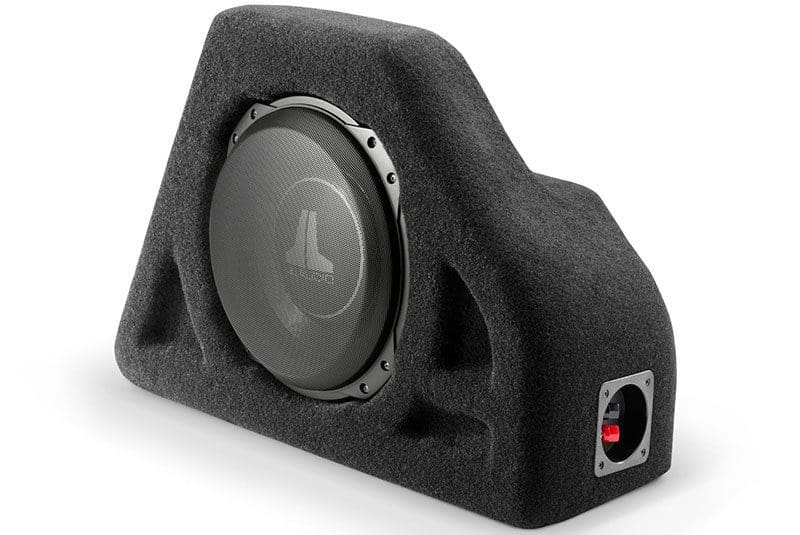
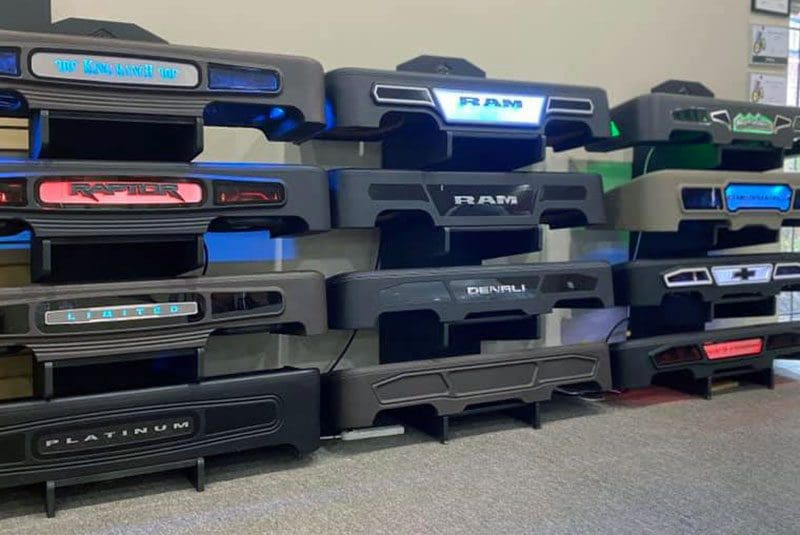
Full-Size Subwoofer Enclosures
If you are looking for a way to rattle your fillings, then choosing a full-size subwoofer solution is a great choice. Options are available from a single 8-inch driver to a quartet of 12-inch subs, each designed to suit a different client in terms of output capability. You’ll want to pair an appropriate amp to this enclosure. Subwoofer amplifiers are available in power ratings from a couple hundred watts to well into the thousands. A word of advice: Be wary of those “too good to be true” deals that seem to offer significant power and rock-bottom prices. Often, these amplifiers use inexpensive components that won’t stand the test of time. Likewise, they are rarely designed to take the radio-frequency noise they produce into consideration. If you have a new amplifier installed and run into radio reception problems, RF noise is the issue.
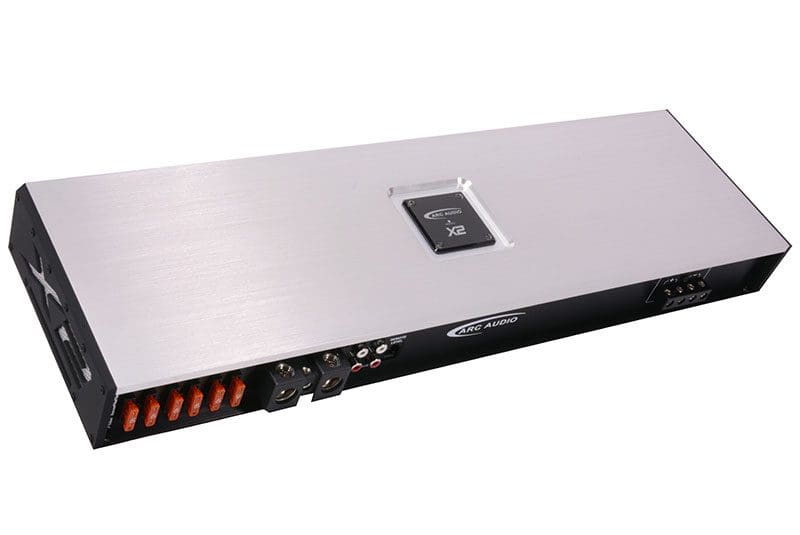
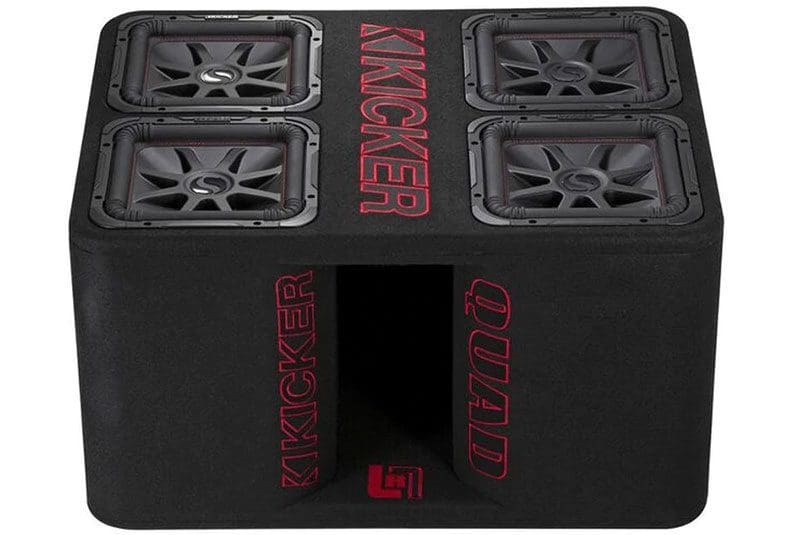
What Else Does Your Subwoofer Upgrade Need?
Your installer is going to need power wire to connect your amplifier to the battery in your vehicle. Once again, we highly recommend shopping for the best quality solution, as opposed to one that offers the best price. Many companies package undersized conductors in a thick jacket to make unsuspecting consumers think they’re getting a great deal. Avoid amp kits and wire that use the word “gauge” to specify the wire size instead of AWG. You will likely get the best performance with all-copper conductors sized using the American wire gauge (AWG) standard.
Depending on whether you have the factory radio in your vehicle or are upgrading the radio that came from the factory, your invoice will include interconnect cables or a line-level interface (often called a line-output converter). Again, better-quality solutions offer better performance. Twisted-pair interconnects that include proper shielding will help keep noise out of your audio system. For interfaces, the technician working on your vehicle may need to measure the output voltage of the radio or factory-installed amplifier in your vehicle before an appropriate solution can be recommended.
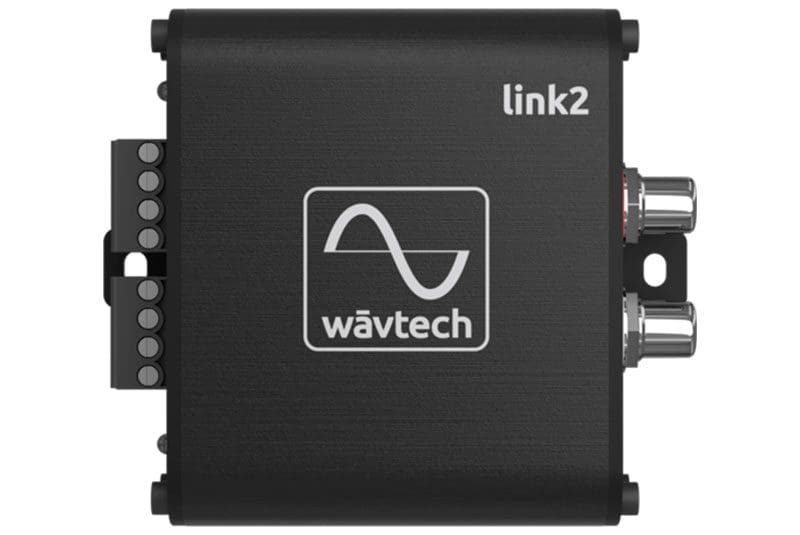
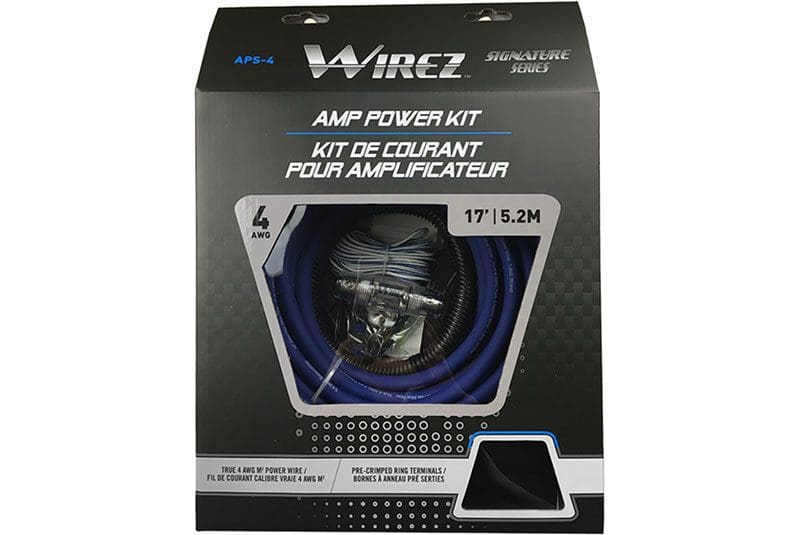
Have a Budget in Mind Before You Shop
Of course, you’re going to need to come up with a target budget to buy the product(s) you want and then have them integrated into your vehicle. Figure on spending at least $300 for a powered under-seat solution, and at least a couple of hours, plus wiring and parts, to have it installed. Many shops will have bundled subwoofer packages available, especially around the holiday season. These packages typically include subwoofers, an enclosure, an amplifier and a wiring/installation kit. Some of these offer an impressive balance of performance and value.
Upgrade Your Vehicle with a Subwoofer Today!
If you want to make a dramatic improvement to your music listening experience, drop by your local specialty mobile enhancement retailer today and ask about the options they have available to add bass to your car or truck.
